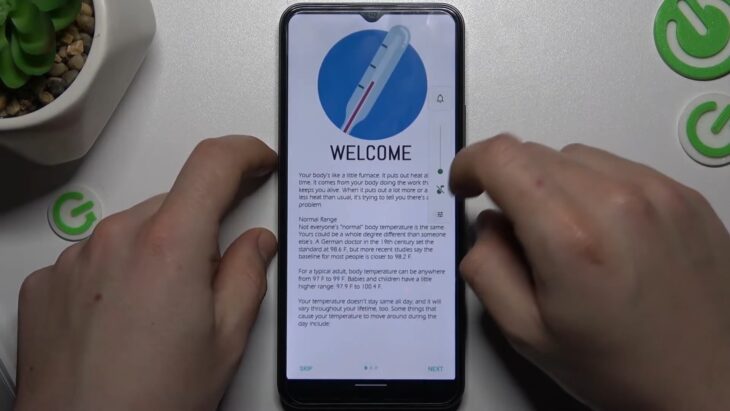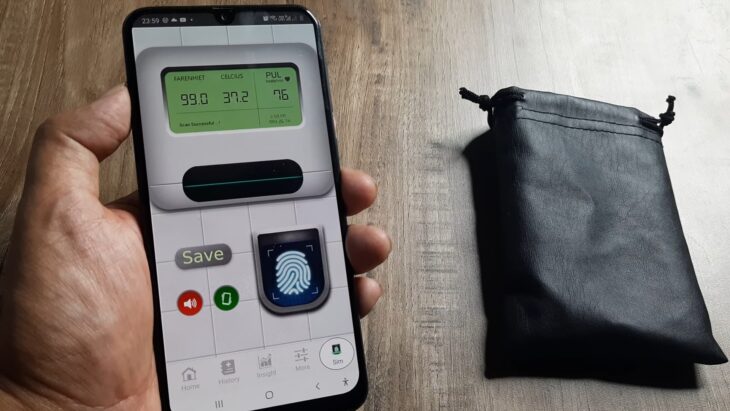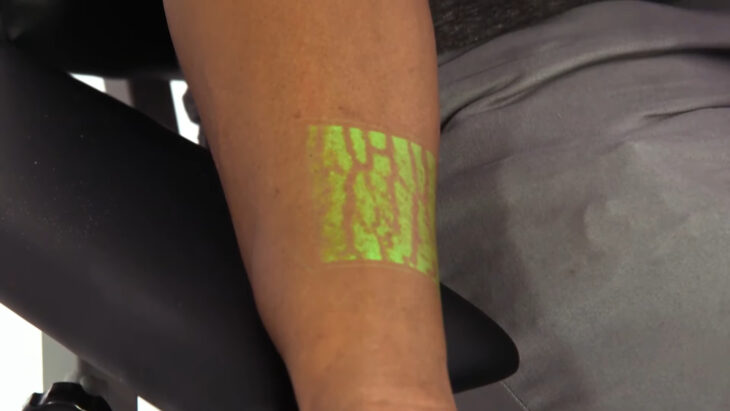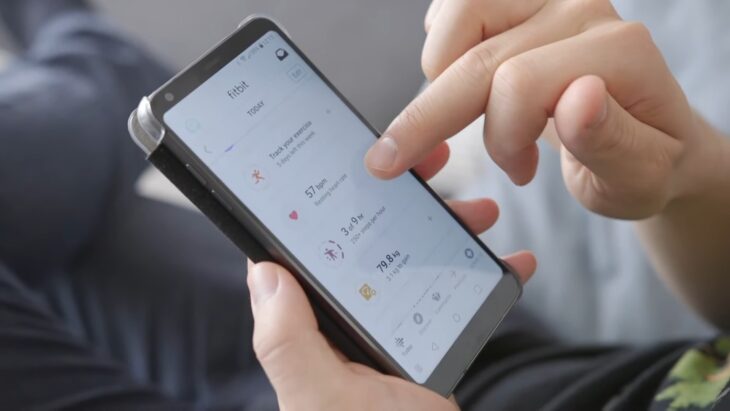Keeping track of body temperature is crucial for managing health, particularly when fever could indicate various diseases. In the past, this meant using a physical thermometer and waiting for results.
Now, technology has revolutionized this process. Smartphone apps and smart devices allow easy and precise temperature tracking.
These app-based thermometers, available on different platforms, provide a convenient way to measure and monitor body temperature. App-based thermometers display a range of complexity. Some offer basic estimations, while others integrate with external gadgets for more accurate readings.
These apps utilize the built-in sensors of smart devices or connect with wearable technology to deliver instant temperature readings. Their value lies in continuous health tracking, enabling users to observe temperature changes over time.
Furthermore, many of these apps include additional functionalities such as advice for managing fever and options to directly share information with healthcare professionals. This integration of technology and health care aids in a more proactive approach to managing one’s health.
Table of Contents
ToggleWhy is Body Temperature Important?
When discussing body health and wellness, it’s essential to understand the role of body temperature as a vital sign indicating physical condition. It is a measure typically expressed in degrees Celsius (°C) or Fahrenheit (°F).
Body temperature is an indicator of metabolic activity within the body and is usually maintained within a narrow range. Normal baseline readings range approximately from 36.1°C to 37.2°C (97°F to 99°F), with individual variations.
Factors affecting body temperature include the time of day, activity levels, and the person’s age, among others.
Fever Detection and Health Monitoring
A fever is the body’s response to infection or inflammation, signifying that the immune system is active. It is often characterized by an increase in core body temperature above the normal range.
Various types of devices, including thermometer apps like Thermo-Smart Fever Management, have been developed to monitor body temperature and detect fevers efficiently. Even if you don’t have any health issues at the moment, checking out these stats can help you improve your workout and recovery routine, especially if you recently started exercising unconventionally.
Core Body Temperature vs Surface Temperature
Core body temperature reflects the temperature of the internal organs and is a more accurate representation of the body’s overall temperature status than surface temperature. Devices that measure core body temperature, for example, ear or rectal thermometers, tend to provide more reliable data than those measuring skin temperature.
However, new technologies are emerging to bridge this gap.
Thermometer Apps and How They Work

Thermometer applications have transformed health monitoring by harnessing smartphone technology. These apps, designed for both iOS and Android devices, simplify tracking body temperature using the sophisticated sensors available in today’s smartphones.
This offers users a convenient and efficient way to keep tabs on their health.
There are Different Types of Apps
Thermometer apps fall into two main categories.
- The first type pairs with external devices, like a real thermometer or temperature sensor, often connecting via Bluetooth. An example is apps that work with a smart thermometer to provide accurate temperature readings.
- The second type relies on the smartphone’s internal sensors and algorithms to estimate body temperature. However, these estimations tend to be less precise compared to apps that use external hardware.
Innovations in Temperature Sensing
Public health organizations and research laboratories are keenly focused on improving the accessibility and accuracy of these technologies. Recent innovations involve crafting advanced algorithms for more refined heat transfer analysis.
Additionally, there’s an emphasis on integration with clinical-grade hardware. This synergy aims to boost the precision of readings obtained via smartphone apps, making them more reliable for health monitoring.
Smartphone Sensors and Thermistors
Smartphones come equipped with multiple sensors, such as thermistors, primarily used to keep track of the device’s temperature and prevent overheating. Certain thermometer apps assert that they use these sensors to gauge body temperature.
However, since these sensors are designed for controlling the device’s temperature rather than for medical assessments, their effectiveness in measuring body temperature can be restricted. Acknowledging these limitations, app developers are actively working on enhancing the capabilities of these apps, striving for a more precise smartphone-based method for body temperature measurement.
Accuracy and Reliability
The accuracy and reliability of a thermometer app hinge on numerous factors, which include the quality of the smartphone’s sensors, the presence of an external temperature sensor, and the sophistication of the app’s algorithm. While a real thermometer paired with an app can deliver reliable readings, standalone apps may not offer the same level of accuracy.
Users need to understand the limitations and use these apps to complement, not replace, traditional methods of temperature measurement, especially for clinical or diagnostic purposes.
How to Choose the Right App?

When seeking a thermometer app, it’s crucial to consider specific features and device compatibility to ensure accurate and reliable readings.
Features to Look For
The ideal thermometer app should offer a range of functionalities to meet users’ needs. Key features include:
- Temperature Units: The ability to switch between Celsius and Fahrenheit.
- History Tracking: Options to log and review past readings.
- Ease of Use: A user-friendly interface that simplifies the process.
- Accuracy: The app must provide precise temperature readings.
- Ratings and Reviews: High ratings and reviews are indicative of app reliability and user satisfaction.
- Additional Tools: Features like symptom tracking or advice for fever management can be beneficial.
The app iThermonitor, for example, provides users with continuous temperature monitoring, which can be especially useful for tracking fever trends over time.
Compatibility with Devices
Before downloading a thermometer app, check its compatibility with your smartphone. Consider the following:
- Supported Phone Models: The app should be explicitly compatible with your device.
- Required Accessories: Some apps may need external hardware like a connected thermometer.
- Interference with Phone Accessories: Confirm that the app functions correctly with accessories, such as screen protectors, which may affect temperature readings.
| Smartphone Model | App Compatibility | Additional Hardware Required |
| iPhone 12 | Yes | No |
| Samsung Galaxy S21 | Yes | Yes (external thermometer) |
| Google Pixel 5 | No | N/A |
Users should always confirm compatibility with their devices before downloading to avoid any discrepancies in performance.
Integration of Smart Devices for Temperature Monitoring
Smart devices have transformed the way individuals monitor their health. They provide easy and innovative solutions to track vital signs like body temperature with clinical precision or for early detection of health anomalies.
Wearables
Wearables, such as Fitbits and other fitness trackers, have integrated temperature sensors. These devices can continuously monitor temperature changes, providing a temperature diary for users.
Continuous tracking allows for early fever detection, which can be crucial for prompt medical intervention.
Smartwatches and Health Apps
Smartwatches, including the upcoming Apple Watch Series 8, are expected to be equipped with advanced health monitoring features such as body temperature measurement. These wearable devices work in conjunction with health apps to analyze temperature data and provide COVID-19 exposure warnings, contributing to public health monitoring efforts.
Smart Devices in Public Health
Smart devices are becoming invaluable in public health, especially in managing diseases like COVID-19. Temperature-sensing smart devices act as a public fever tracker, alerting users to potential illnesses.
These devices, linked with health platforms, can issue alerts and provide a scalable solution for illness tracking on a public level.
Scientific Research and Clinical Trials
Recent advancements have emerged from universities and the development of clinical-grade thermometers, indicating a significant leap in body temperature measurement technology.
University Research Projects
The University of Washington, particularly through the Paul G. Allen School of Computer Science & Engineering, has been at the forefront of developing innovative methods for health monitoring. Researchers are focusing on creating new applications that can potentially leverage smartphones as diagnostic tools.
By using sophisticated algorithms that process training data, they aim to provide precise body temperature readings. Projects at the university level often serve as crucial starting points for groundbreaking healthcare tools that may later evolve through rigorous clinical trials.
Clinical-Grade Thermometer Development
In the field of high-precision medical thermometers, the Department of Emergency Medicine is a key player. A prominent member of this department, Dr. Mastafa Springston, is deeply engaged in clinical trials aimed at improving thermometer technology.
These trials are essential for verifying the accuracy and reliability of thermometers, especially in critical settings such as emergency departments. The focus of these trials is on refining non-invasive methods for measuring temperature, ensuring they are both rapid and accurate.
This ongoing research and validation are crucial in providing better tools for patient care, offering significant benefits to both patients and healthcare professionals.
Innovations and Further Development

In the landscape of health monitoring, temperature measurement technology is swiftly advancing with new developments that promise more convenience and accuracy for users. These innovations have the potential to revolutionize personal health management.
Emerging Technologies and Innovations
The advent of smart thermometers that connect with apps represents a significant advancement, making it possible for users to obtain clinically precise body temperature readings easily. For example, certain apps now can estimate body temperature using the smartphone’s sensors.
Additionally, the development of battery-operated heat sensors, capable of long-term operation, is enhancing the feasibility of continuous temperature monitoring. Another notable innovation is the incorporation of temperature measurement features into wearable devices.
These devices are designed not only to monitor body temperature but also to track various other health metrics, providing a comprehensive overview of an individual’s health status. As these technologies continue to advance, they are expected to achieve a level of accuracy that is almost on par with clinical standards, thereby ensuring their reliability and usefulness in health monitoring.
Challenges and Potential Solutions
Nevertheless, with the rise of new technologies come inherent challenges. One pressing issue is the potential for error in temperature readings, which can arise from environmental factors or device malfunctions.
These inaccuracies can lead to misguided self-diagnoses or the overlooking of serious health conditions. To combat these issues, researchers and developers are focusing on enhancing the precision of personal thermometers.
This includes rigorous calibration of devices against medical-grade equipment to minimize error. Moreover, solutions like advanced algorithms are being explored to compensate for external variables, thus refining the accuracy of temperature readings delivered by apps and wearables.
The goal is to ensure that these personal health tools provide consistent and reliable data that users can trust for managing their well-being.
Practical Tips for Monitoring Temperature

Monitoring body temperature can be crucial in understanding one’s health, especially when managing fever or illness. This section provides focused advice on maintaining a reliable temperature diary, leveraging thermometer apps to inform medical decisions, and adhering to best practices for accurate readings.
Establishing a Temperature Diary
A temperature diary serves as a valuable tool for tracking fluctuations in body heat over time. To begin, individuals should record their temperature at consistent times each day, using an oral thermometer for precision.
It’s beneficial to include context such as symptoms, medication intake, and activity levels. This is an example of a format:
| Date | Time | Temperature Reading | Notes |
| Dec 1 | 8:00 AM | 98.6°F | No symptoms |
| Dec 1 | 3:00 PM | 99.4°F | Mild headache |
Apps for Medical Decisions
Thermometer apps enable users to log and visualize temperature data over time, often presenting the information in an easy-to-understand graph format. This visual aid can assist healthcare providers in making informed medical decisions.
For example, Thermo is not just a temperature-measuring app but also a comprehensive tool for managing family health. While such apps are informative, they should complement, not replace, traditional medical instruments and professional advice.
Precautions and Best Practices
Ensuring accuracy in measuring temperature is crucial. To achieve this, it’s important to use thermometers properly. For oral thermometers, this means placing them under the tongue and waiting for the specified duration before reading the temperature.
Environmental factors, including humidity levels, should also be taken into account as they can impact the accuracy of the reading. Adhering to the guidelines provided by thermometer apps for calibration and considering environmental factors is essential for precise measurements.
If there’s a noticeable difference in temperature readings, it’s important to verify these findings with a medical-grade thermometer and seek advice from a healthcare professional to understand what these readings mean for your overall health.
By following these guidelines, individuals can collect reliable temperature data, which is invaluable for managing their health and effectively communicating with healthcare professionals.
User Experience and Accessibility
When it comes to applications like those that estimate body temperature, they must be intuitive and accessible to diverse user groups to ensure that individuals can confidently and easily monitor health indicators like fever.
User Interface Considerations
The user interface (UI) should facilitate ease of use where users interact with features like a fever phone through simple touchscreen gestures. Real thermometer apps should have clear screens and instantly comprehensible readouts.
Consistent elements such as large buttons and real-time visual feedback help in enhancing the user experience. It is critical that the UI design minimizes complexity and avoids clutter to enable users to take actions like logging their temperature or accessing their temperature history swiftly, without confusion.
Accessibility for Different User Groups
To be truly accessible, an app must be designed to meet the needs of a diverse range of users. This includes incorporating features that aid those with visual impairments, such as screen reader compatibility and voice command functionality.
It’s also essential for these apps to be navigable for individuals with motor impairments, offering straightforward touchscreen interfaces or speech-to-text options for ease of use. Accessibility also means ensuring compatibility with wearable technology like smartwatches, adapting the app for seamless synchronization and optimization for smaller screens.
This broad inclusivity is key, not just for making the app usable for all, but for creating a user experience that is equitable and empowering, allowing everyone to take an active role in managing their health.
Safety and Privacy

When considering apps that measure body temperature using smartphones, two paramount concerns involve how user data is protected and the confidentiality of health information. These concerns are central to the trust users place in such technology, especially with sensitive personal data involved.
Data Protection and Security
Apps designed to measure body temperature can collect a significant amount of sensitive personal data. Data protection and security measures must be stringent to prevent unauthorized access or breaches. Such measures include:
- Secure Data Transmission: All data transmitted between the app and servers should be encrypted using industry-standard protocols.
- Strong Authentication Mechanisms: Access to the app should be controlled through strong authentication methods, like biometrics or two-factor authentication.
App developers may collaborate with public health agencies to ensure that data handling complies with relevant regulations, such as HIPAA in the United States, which governs the security and privacy of health information.
Health Information Confidentiality
Health information collected by smart devices and apps is highly personal. Maintaining the confidentiality of this information is critical. The aspects to consider include:
- User Consent: Apps should only share health data with third parties, like public health agencies, after obtaining explicit user consent.
- Minimum Necessary Use: Smart devices and apps should collect only the information necessary for their intended function, thereby reducing the risk of excessive personal data being at stake.
Frequently Asked Questions
What apps are available for tracking body temperature on Android devices?
Several Android apps are designed to help users track their body temperature, such as FeverCheck and iThermonitor. They offer various functionalities, from recording temperature readings to monitoring fever symptoms over time.
Are there any iPhone apps capable of measuring body temperature directly?
Direct measurement of body temperature via an iPhone is not feasible with apps alone due to hardware limitations. However, apps like Body Temperature App For Fever can help users log and monitor their symptoms to estimate fever presence.
How can one check their body temperature using a mobile phone without a thermometer?
Apps that estimate body temperature without a thermometer use algorithms based on symptom input by the user. While they cannot replace the accuracy of a digital thermometer, they can be useful for tracking changes and patterns in one’s health.
Which free applications can help monitor body temperature?
There are free applications such as Thermo for Smart Fever Management and Thermometer++ that allow users to monitor their body temperature and fever symptoms, helping to track their health over time.
What methods allow for the quickest self-assessment of body temperature?
The quickest method for self-assessment of body temperature is using a digital ear thermometer or a digital oral thermometer, which can provide accurate readings within seconds.
Can I accurately track fever symptoms with a smartphone app?
Smartphone apps, such as those mentioned in U.S. News, can be useful for tracking fever symptoms by allowing users to input and monitor their symptoms. However, for clinical-grade accuracy, traditional thermometers using sensors known as thermistors are recommended.
Last Words
As the field of mobile health technology evolves, so too does the potential for these apps to play a crucial role in both personal health management and public health initiatives. With advancements in algorithms, sensor technology, and app design, users can expect more precise and user-friendly tools in the future.
The key lies in choosing the right app, understanding its features and limitations, and using it as a complementary tool for health monitoring. By doing so, individuals can take a proactive approach to managing their health, armed with a better understanding and convenient access to vital health information.


